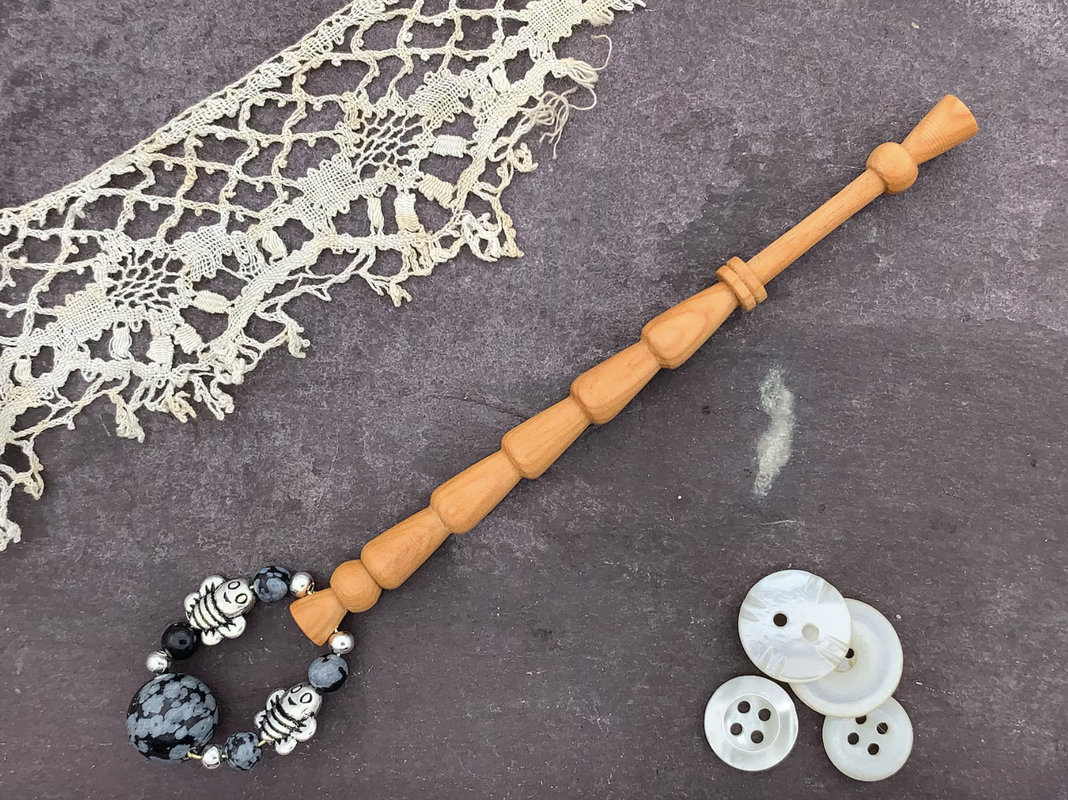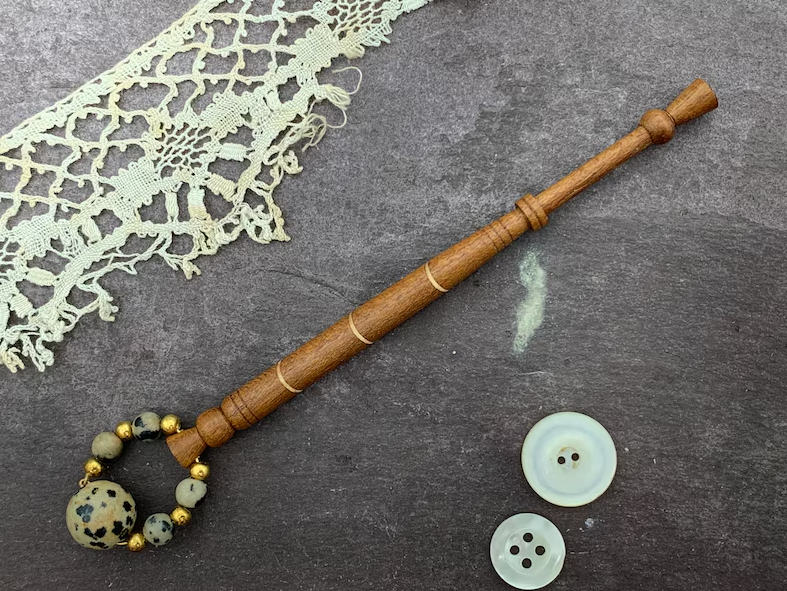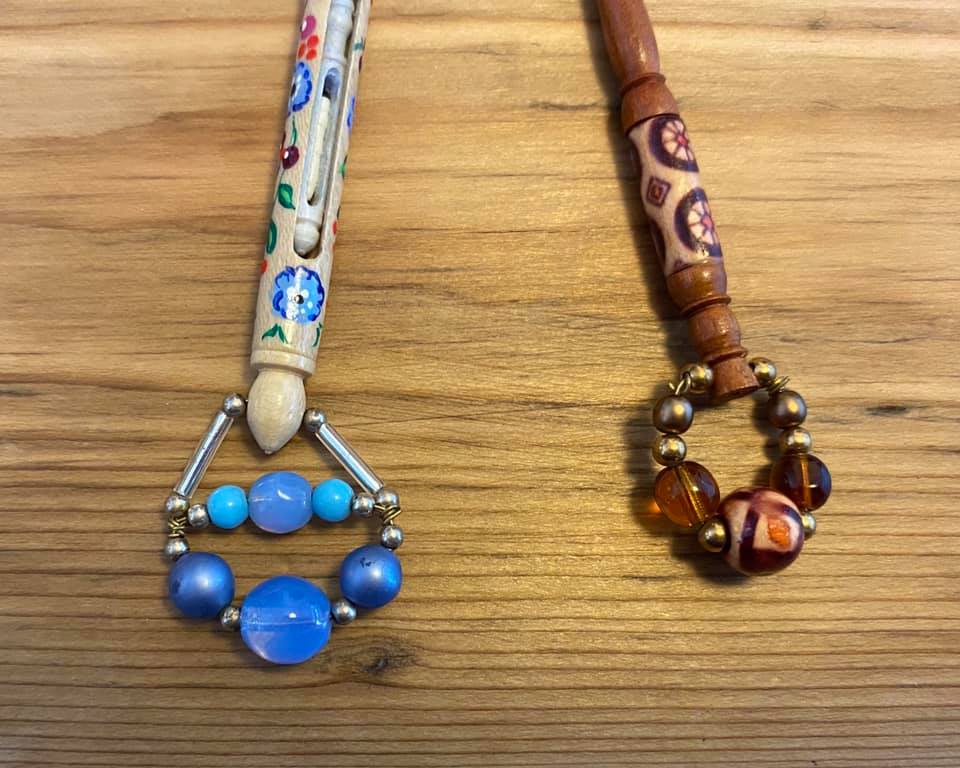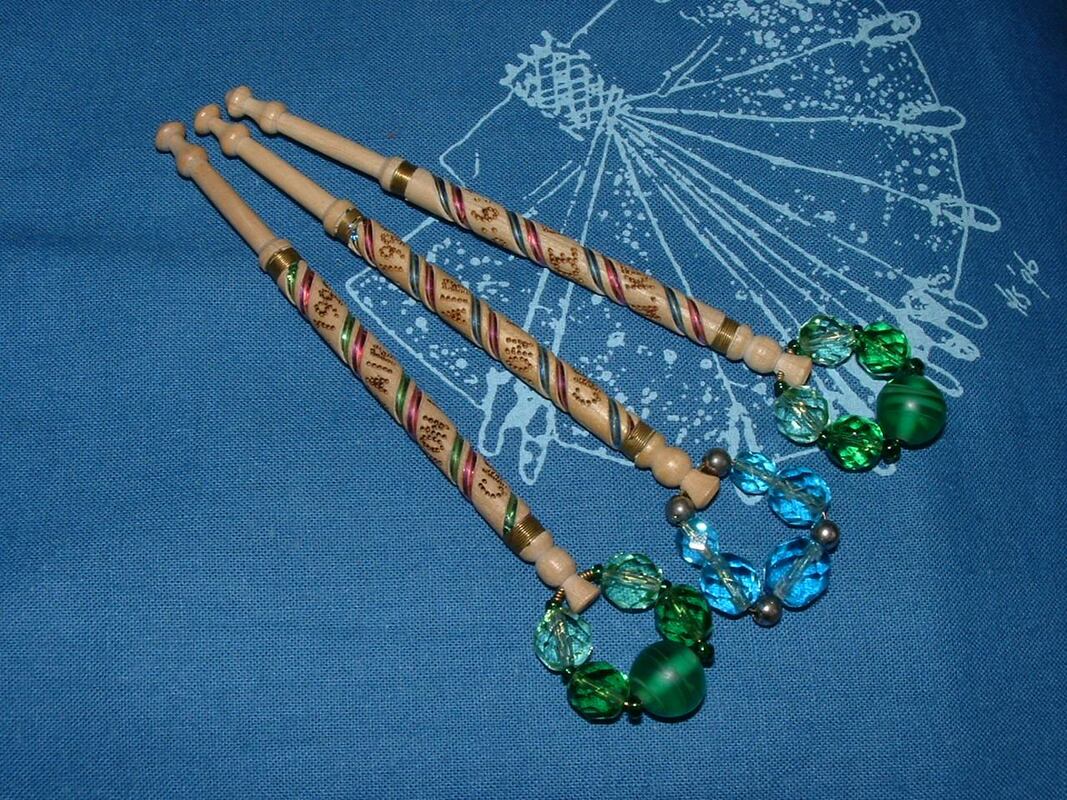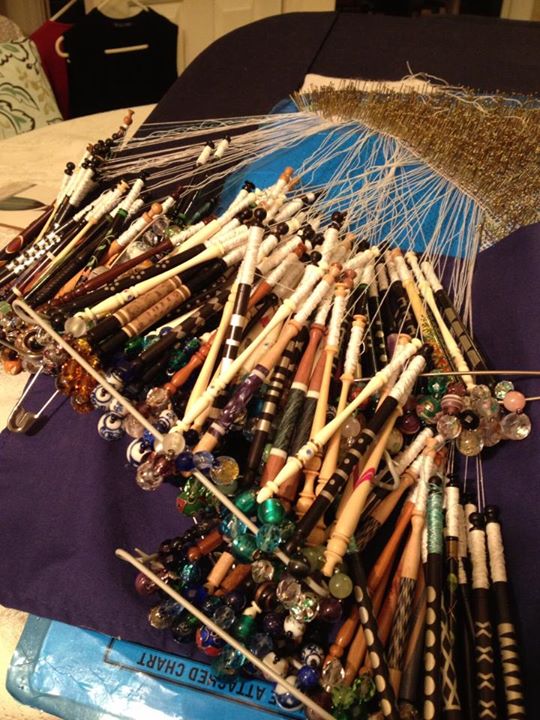Bobbin Terms
On this page:
- Bees Knees Bobbins
- Bitted bobbins
- Cow and Calf
- Jingles
- Mother and Baby
- Spangles
- Tinsel
- Tunbridge Ware
- What is the wood?
- Wired bobbins / wired bound

